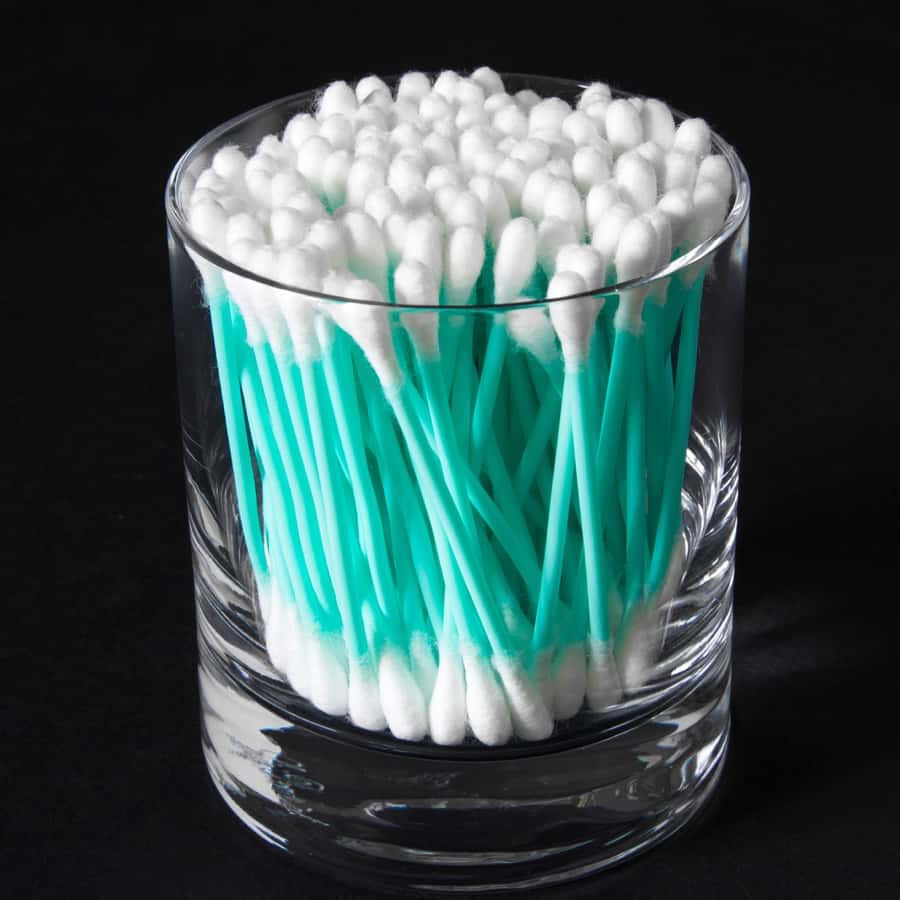
There are few things in the bathroom medicine chest that look less scary that cotton swabs. They have no sharp blades like nail scissors. They don’t contain potentially dangerous drugs, like cough medicine or pain relievers do. And yet every year people injure themselves with these tiny sticks with fluff on their ends. Many of the injuries are in children, but adults can become injured as well. One reader reports that even without a defined injury, there could be a downside to using cotton swabs.
How Can You Clean Your Ears Without Cotton Swabs?
Q. Is hydrogen peroxide a good way to get rid of ear wax? I’ve been told not to use cotton swabs, so I am confused about the right approach.
A. Many readers report that using a commercial product such as Debrox with carbamide peroxide can soften the wax. After that, a few drops of hydrogen peroxide may clean out excess wax. When in doubt, always check with an otolaryngologist to make sure there is no perforation of the ear drum.
Do Cotton Swabs Irritate Ears?
Q. I complained to my ENT about itchy ears. At the same time, I also confessed to using cotton swabs to dry my ears after showering. In addition, that’s how I apply a dab of baby oil for the itching. He said the swabs irritate my ears, which makes them itch.
I doubted this, since I am very gentle. However, I must say that since I reluctantly stopped using swabs, the itching has not only drastically subsided, it’s almost non-existent.
A. Thanks for sharing your story. Ear, nose and throat (ENT) doctors discourage the use of cotton swabs because they can cause ear injuries (JAMA Otolaryngology Head & Neck Surgery, Feb. 1, 2018). They recommend a damp washcloth instead.
A Cotton Swab Injury:
Q. I had the cotton tip of a swab come off in my ear. It became infected and the ENT doctor had to use a vacuum to get it out. That was the most painful experience of my life. Do not use cotton swabs for cleaning your ears!
Swabs and Eardrum Injuries:
A. Researchers have found that cotton-tipped swabs are often associated with eardrum injuries. In some instances, children injured themselves trying to use the swabs as they’d seen adults do. Instead of these applicators, experts advise cleaning the ear with a washcloth. They point out that earwax is water-soluble and manufactured in the outer third of the ear canal.
Cotton Swabs and Kids:
This is not the first report on the hazards of cotton swabs. Earlier in 2017, researchers reported on the numbers of children treated in emergency departments every year due to applicator accidents (Ameen et al, Pediatrics, July 2017).
About 12,500 children are treated in emergency departments annually for problems caused by cotton tip applicators. Often the effect of trying to clean the ears is simply to push the wax down into the ear canal. Using them in the ears can also cause injuries, including perforated eardrums.
Most of the problems occurred when children were trying to clean their own ears. The senior author emphasizes that cotton swabs should never be used to clean anyone’s ears and they should definitely be kept out of children’s reach.
What Can You Use Instead?
The investigators point out that ears clean themselves naturally. Just wiping with a damp washcloth after a bath or shower should be sufficient. If that is not enough, they recommend gentle irrigation. Parents should ask the pediatrician to demonstrate the proper technique.
Annie has written:
“My late husband was a very experienced General Practitioner and each year saw a significant number of ear injuries, particularly in children, caused by cleaning ears with cotton buds.
“His advice to parents (and adult patients) was ‘Never put anything smaller than your elbow in your ear.’ Heed this and you will never suffer an ear canal injury.”
Citations
- Carniol ET et al, "Traumatic tympanic membrane perforations diagnosed in emergency departments." JAMA Otolaryngology Head & Neck Surgery, Feb. 1, 2018. DOI: 10.1001/jamaoto.2017.2550
- Ameen ZS et al, "Pediatric cotton-tip applicator-related ear injury treated in United States emergency departments, 1990-2010." Ameen et al, Pediatrics, July 2017. DOI: 10.1016/j.jpeds.2017.03.049

